Populations of vultures and other raptors in the Balkans still face a range of threats, with illegal poisoning top of the list. The reintroduction of cinereous vultures in the Rhodope Mountains of Bulgaria throws a spotlight on these threats, but also offers hope for the future.
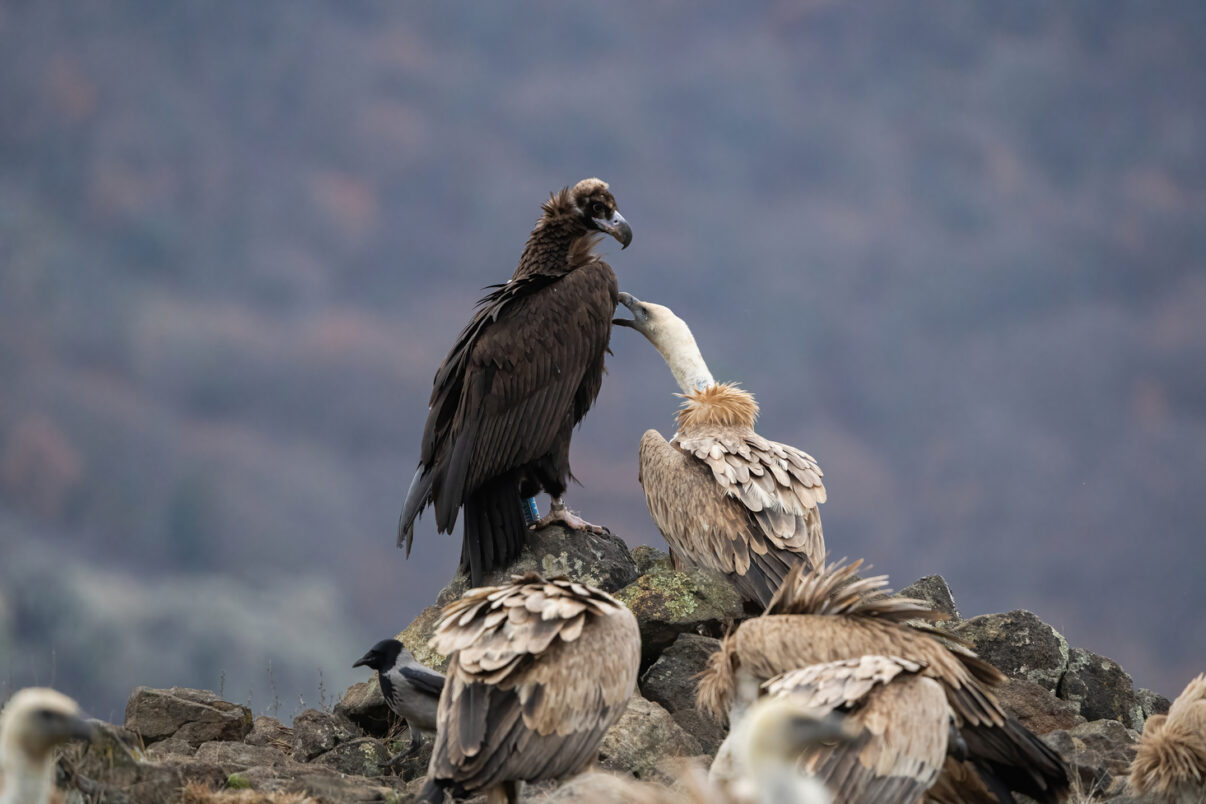
A rewilding milestone
In November 2022, a hugely rewarding milestone was reached in the rewilding of Bulgaria’s Eastern Rhodope Mountains when 14 cinereous (black) vultures were released into the wild. The reintroduction – which will be followed up with another in October – was the latest chapter in a history of highs and lows for this ecologically important species, and for all vultures across the Balkan Peninsula.
The release of the birds, which bodes well for the future, has thrown a spotlight on both the opportunities and challenges of restoring the region’s vulture populations, as well as populations of other raptors. Although some vultures have been lost, the majority of the reintroduced birds continue to do well, while the rewilding team have gained knowledge and expertise that should prove invaluable as the reintroduction programme continues.
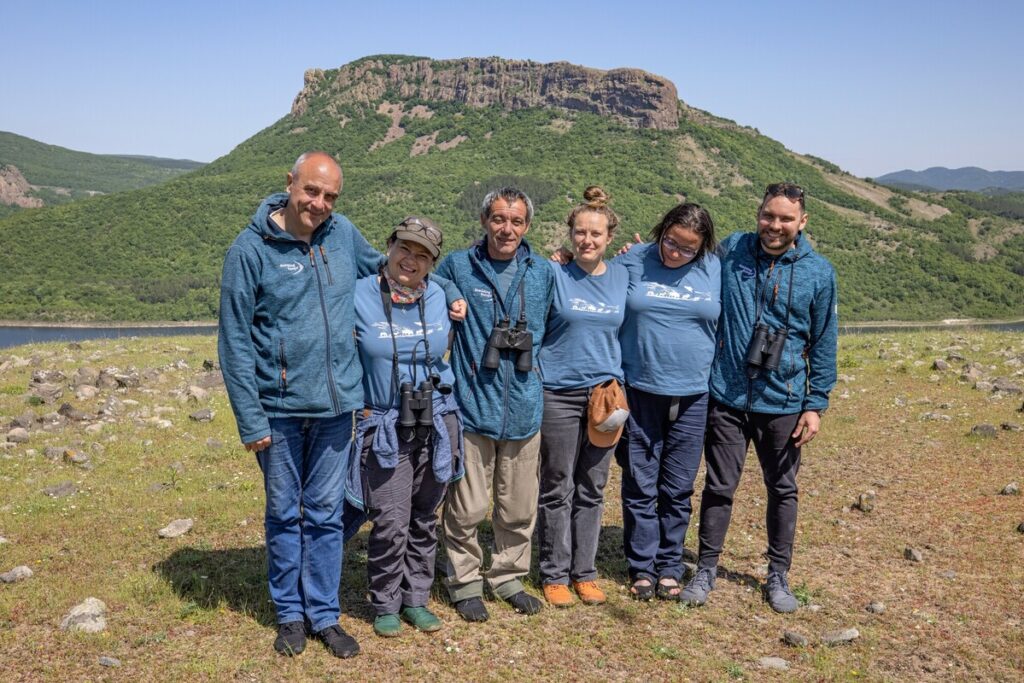
Historical factors
The release of cinereous vultures into the Rhodope Mountains has been made necessary by a long-term decline in the species, both in Bulgaria and further afield. Before the impact of man, these majestic birds boasted an extensive geographical range in Europe – mainly in central and southern regions, including Iberia, southern France, and the Balkans. But during the twentieth-century populations started to decrease and disappear, particularly across the Balkan Peninsula.
This decline was mainly driven by the practice of putting out poisoned carcasses to try to exterminate predators such as wolves. Vultures, which cover extensive areas in search of food, are drawn to these carcasses and are also poisoned. Habitat change and loss, and the overall reduced availability of carcasses – both of wild herbivores and livestock – were also important factors. The latter came about as a result of agricultural modernisation, and the introduction of carcass disposal requirements in Member States of the European Union.
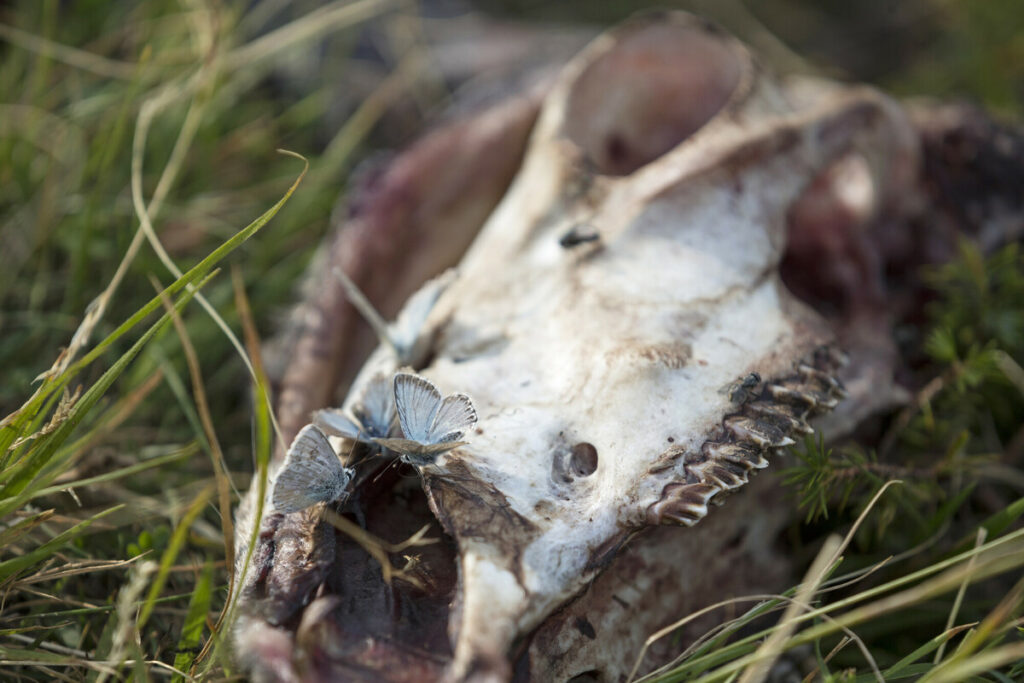
The problem with poison
Despite millions of euros of investment in vulture conservation, the illegal use of poison continues to be the single most important threat to vulture populations in the Balkan Peninsula – and the biggest obstacle preventing Europe’s four vulture species (cinereous, griffon, Egyptian, bearded) from making a comeback in the region. Poisoning also affects other raptor species, such as eagles, buzzards and kites.
According to the Balkan Vultures Poison Study 2022, which was conducted as part of the BalkanDetox LIFE initiative, 1,046 poisoning and presumed wildlife poisoning events were recorded across Albania, Bosnia and Herzegovina, Bulgaria, Croatia, Greece, the Republic of North Macedonia, and Serbia between 2000 and 2020. Attempts to control mammalian predators (mainly wolves, foxes, jackals and bears) – and the potential damage they could cause to livestock, agricultural production, and game animals in hunting areas – was the main motive behind these incidents. Across the Balkans, poisoning incidents typically peak between February and April, coinciding with the end of the hunting season.
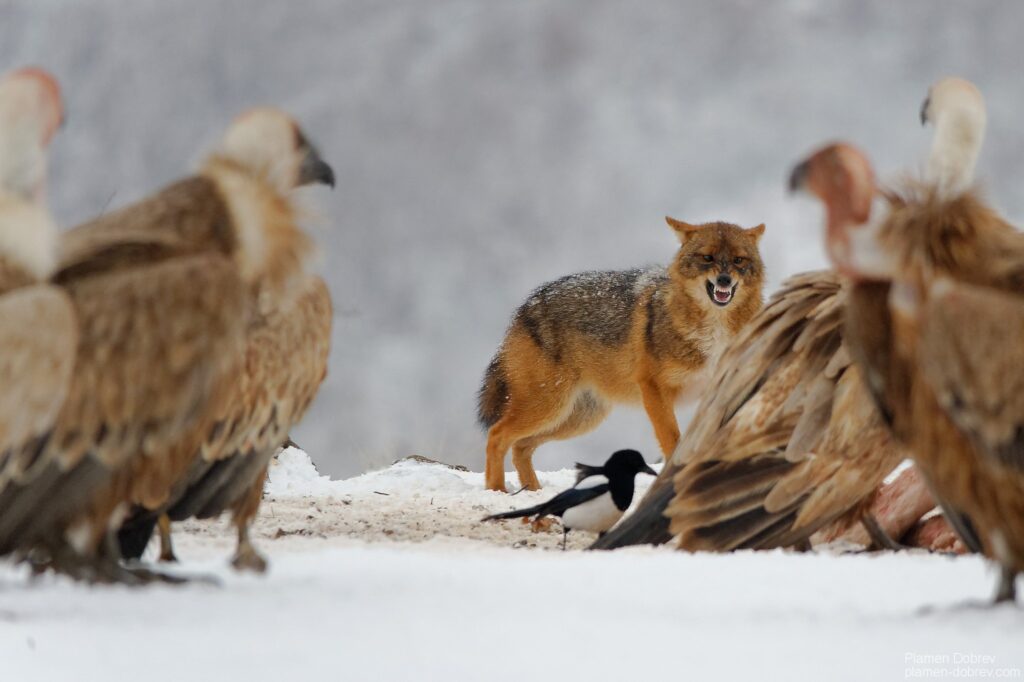
Devastating impact
Illegal wildlife poisoning can have a devastating effect on cinereous vultures, as they are social feeders – this means a poisoned carcass can result in the deaths of multiple birds at one time. Vultures were recorded as casualties in a quarter of the Balkan poisoning events detailed above, which meant a total of 465 birds perished – including 17 cinereous vultures, 47 Egyptian vultures, and one bearded vulture – over the 20-year study period. More fatalities undoubtedly went unrecorded.
“Just as they did in Western Europe 10 years ago, we are now starting to see Balkan vulture populations recover, albeit at a slower pace,” says Dr. José Tavares, Director of the Vulture Conservation Foundation, with which Rewilding Europe has a Memorandum of Understanding to support European vulture conservation and rewilding.
“But we need to keep working on the main threats to vultures to mitigate their impacts, and to do this in all Balkan countries, as this is one common region for the birds. In particular, authorities and enforcement agencies need to engage more and more effectively in the fight against illegal poisoning of wildlife, which is an environmental crime.”
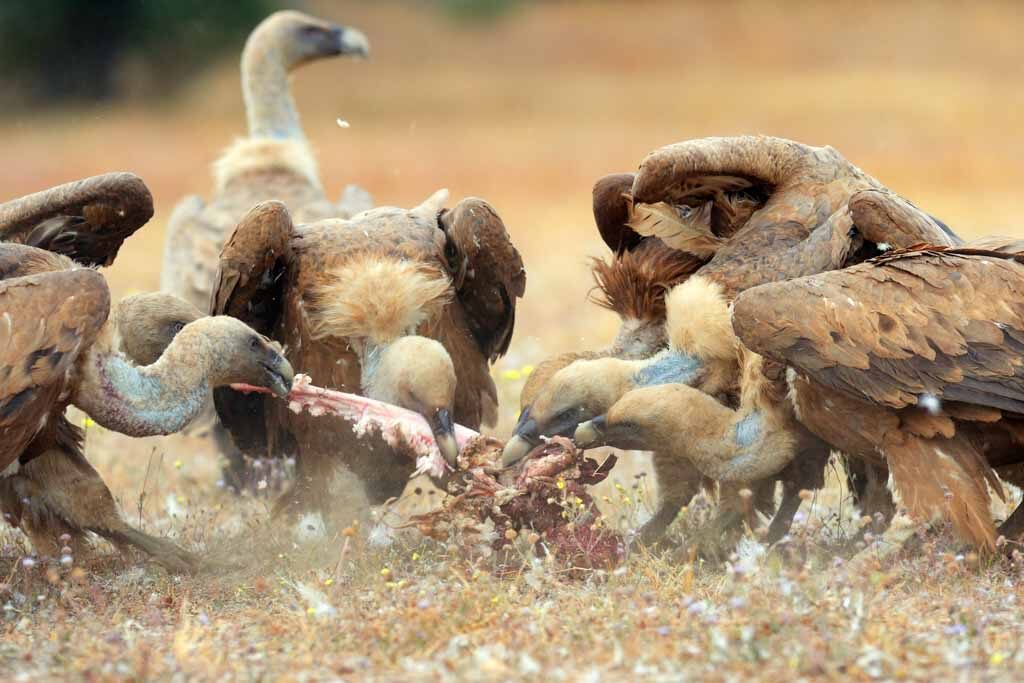
Ongoing support
Between 2016 and 2021, the LIFE RE-Vultures initiative saw the Rewilding Rhodopes team – in collaboration with Bulgarian and Greek partners – take significant steps forward in stabilising and growing vulture populations in the Rhodopes. The tagging of both cinereous and griffon vultures with GPS transmitters was critical to this, giving the local rewilding team and partners groundbreaking insight into the movement of vulture populations, the various threats that they face – including poisoning – and the best ways to support the birds’ comeback.
“Being able to track the birds is absolutely critical,” says Dobromir Dobrev, a vulture expert working for the Bulgarian Society for the Protection of Birds (BSPB) who is attached to the Rewilding Rhodopes team. “If we weren’t able to follow the vultures, both remotely and on the ground, the risk to the birds would be far higher.”
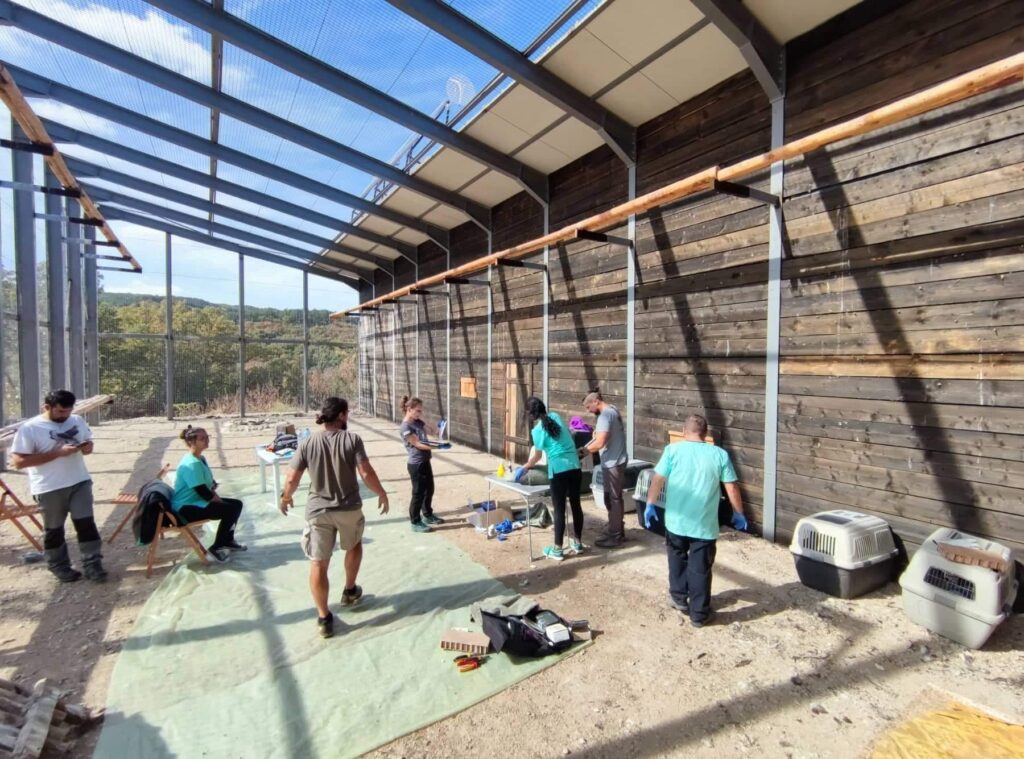
Anti-poison dog teams
In 2016, as part of the LIFE RE-Vultures initiative, Bulgaria’s first anti-poison dog unit – comprising a highly trained dog and handler – began patrolling the Rhodope Mountains rewilding landscape. The main aim of the unit, which continues its work today, is to help establish poison-free areas by controlling and removing poisoned baits before they can negatively impact local wildlife. More details about its success can be found in a special LIFE RE-Vultures report.
The success of this unit has led to the establishment of two more anti-poison dog units by the Bulgarian police in 2022, as part of the so-called “National Action Plan to Combat the Illegal Use of Poisons in the Wild“. The plan, which was developed by the BSPB and partners, has also seen a guide for investigating cases of wildlife poisoning developed, based on established best practice in other European countries, such as Spain and Greece.
“The political situation in Bulgaria is a little complex right now, but going forwards we will push for these police units to be more actively engaged in nature conservation,” says Dobromir Dobrev.
Stronger enforcement
Moving beyond poisoning, two of the cinereous vultures released in November have recently been lost in poaching-related incidents – one in Bulgaria and one in Turkey – highlighting the range of threats faced by the birds.
For Balkan vultures, poaching is less of a problem than poisoning, but it remains a clear and present danger. In the case of the bird lost in Bulgaria, it was probably an opportunistic killing – the perpetrators were on the look out for animals to poach, and the bird happened to be in the wrong place at the wrong time.
“The Rewilding Rhodopes team, along with our partners, call on the Bulgarian police and prosecutor’s office to redouble their efforts to detect and investigate these crimes, and to really strengthen controls to prevent poaching,” says Dobromir Dobrev. “We would also like to see a specialised police unit for investigating crimes against nature created in the very near future.”

Lessons learned
Any reintroduction of wildlife is filled with challenges, with the reintroduced animals exposed to a range of natural and anthropogenic threats as they acclimatise to their new environment. As the cinereous vulture reintroduction programme continues, the rewilding team will benefit from a greater understanding of these threats.
“We learned a lot over the last seven or eight months, while we were taking care of the cinereous vultures that were eventually released in November,” says Dobromir Dobrev. “Some improvement measures were easy to implement, such as adapting feeding and care strategies while the birds were inside the enclosure.
“Once we released the birds, we saw that some were far more adaptable to their new situation than others. Male birds tended to stay close to the enclosure, allowing them to adapt in a relatively safe environment, whereas female birds began to explore and make far longer flights almost immediately, which exposed them to greater danger. The reason for this still needs to be clarified.”
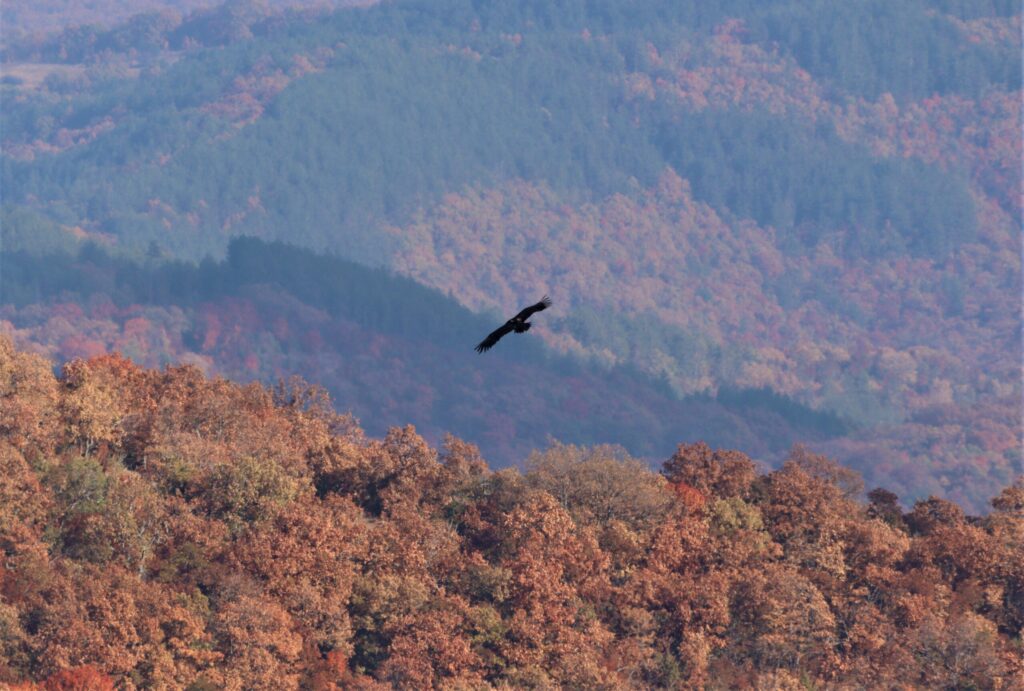
Reasons to be cheerful
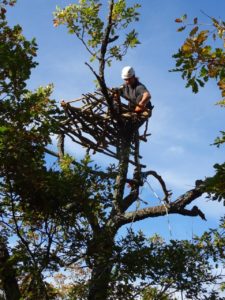
Despite the loss of several cinereous vultures – through poaching and natural causes – there are plenty of reasons to be upbeat about the reintroduction programme.
A pair of released birds have already been displaying mating behaviour, and one bird has even been seen with a bundle of grass in its beak. Although the vultures are not yet fully grown, it is possible that they will attempt to nest in March. Everyone in the local rewilding team, their partners, and Rewilding Europe has their fingers crossed that this will happen!
“We hope and expect to see more couples form in the future,” says Dobromir Dobrev. “To help them, we have already installed artificial nests in the area. Building nests is not an easy job for vultures, especially for such young and inexperienced birds that have been kept in an enclosure for many months.”
Some of the released birds have already been photographed from one of the vultures hides in Madzharovo, one of the key rewilding sites within the Rhodope Mountains rewilding landscape. This is good news for nature-based tourism and communities in the area, with growing numbers of nature lovers drawn to the Rhodope Mountains for their increasingly spectacular wild nature.
